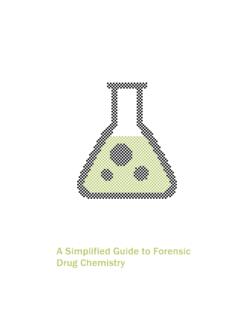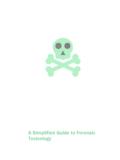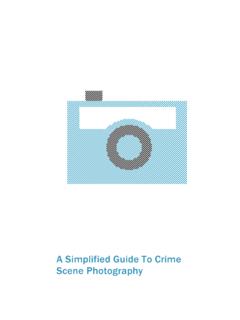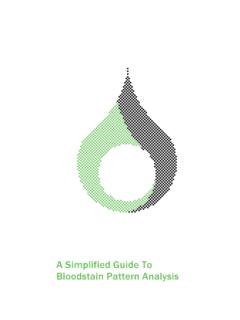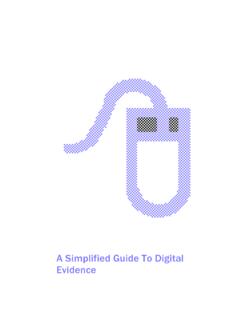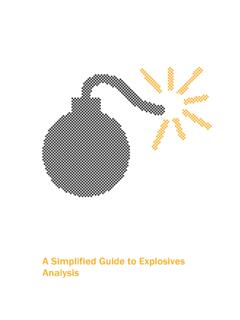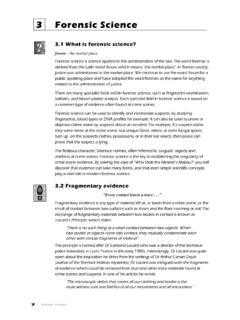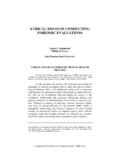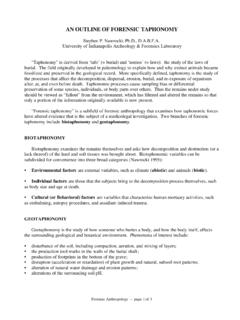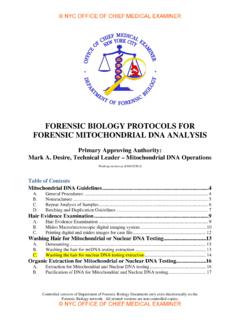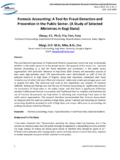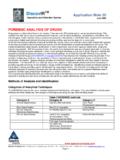Transcription of A Simplified Guide To Forensic Document …
1 A Simplified Guide To Forensic Document Examination Introduction An abundance of crucial information can be gleaned from documents related to a criminal or civil case. The suicide note found next to the deceased was it actually written by a killer trying to cover up his crime? The bank robber's hold- up note does it contain invisible impressions that indicate the address of the hideout? The will of a wealthy person was it altered so a relative could receive a windfall? The discipline of Forensic Document examination, often referred to as questioned documents, is frequently associated with white- collar crimes such as check fraud; however, in practice, this area of Forensic science can be used in a wide array of cases from medical malpractice to art forgeries to homicides.
2 Armed with sophisticated technology, Forensic Document examiners can peer into the visible and invisible marks on a Document to extract an abundance of details that may verify authenticity or provide additional information crucial to the investigation. The digital age has made the work of Forensic Document examiners even more important. With the availability of powerful software programs such as Adobe Photoshop , Acrobat and others, it has become significantly easier for criminals to create and manipulate all manner of fraudulent documents from contracts to currency. Principles of Forensic Document Examination Forensic Document examiners often deal with questions of Document authenticity. To determine whether a Document is genuine, an examiner may attempt to confirm who created the Document , determine the timeframe in which it was created, identify the materials used in its preparation or uncover modifications to the original text.
3 Documents can be examined for evidence of alterations, obliterations, erasures and page substitutions. Or the examiner can study the methods, materials or machines that created the Document , providing key information that can identify or narrow the possible sources of the Document . The ink, paper, writing tools, ribbons, stamps and seals used in production of the Document may all reveal important clues. The examiner may even discover valuable evidence in a Document 's invisible impressions. A key element of Document examination focuses on handwriting. Forensic examination and comparison of handwriting, which includes hand printing and signatures, is based on three main principles: (1) Given a sufficient amount of handwriting, no two skilled writers exhibit identical handwriting features; (2) every person has a range of natural variation to his or her writing; (3) no writer can exceed his or her skill level ( , it would not be possible for a marginally literate person who has only learned to produce very basic hand- printed letters to execute perfectly formed, highly skilled cursive writing).
4 Computer databases maintained by the Secret Service, German Federal Police and Federal Bureau of Investigation contain handwriting samples from hundreds of thousands of writers. Comparisons of these databases have not identified two individuals who have the exact same combination of handwriting characteristics, adding to the authenticity of handwriting as a solid form of evidence. Why and when is Forensic Document examination used? Since documents are part of daily life, Forensic Document examiners work a wide variety of cases. Forensic Document examiners are called to investigate the authenticity of documents in situations such as: forgeries kidnappings counterfeiting extortion identity theft stalking fraud contested wills suicides contested contracts homicides medical malpractice bank robberies title/deed lawsuits Forensic Document examiners are most frequently asked to resolve questions of authorship.
5 Is the signature on the mortgage loan genuine? Who wrote the anonymous note? Did the deceased sign the will? By comparing documents found at a crime scene to a suspect's known writing samples, the Forensic Document examiner can help confirm who wrote the note and include or exclude suspects from the investigation. Ransom Note Nabs Kidnapper A 1956 kidnapping case from Long Island, New York, helps illustrate the key role Forensic Document examination can play in an investigation. In this case, a one- month- old child was taken from his home and a ransom note was found in the baby's carriage, supposedly left by the child's babysitter. Investigators discovered distinguishing characteristics in the way the writer formed 16 letters of the alphabet, most notably the lowercase m , which resembled a sideways z.
6 Investigators searched through nearly two million documents looking for similar writing until a probation officer found in his files documents written by a 31- year- old auto mechanic with the same peculiar m . Document examiners were able to conclusively match the ransom note to the suspect's handwriting, helping to secure a conviction. Fraudulent Checks A common problem brought to Forensic Document examiners involves alterations, especially to legal documents. For instance, if someone altered a check to increase its amount, examiners may be able to determine this by comparing the way the inks from different pens react when subjected to infrared radiation. In the example below, a check made out to Cash for $1,000 has been altered by changing the 1 to a 9 and adding a recipient's name.
7 Although the black inks appear the same in visible light, when subjected to certain frequencies of infrared light, the ink used to prepare the genuine check reacts differently than the ink used to alter the check, making the alteration obvious. Altered check written in black ballpoint pens when viewed with visible light (Courtesy of Marie Durina) Same altered check viewed with infrared radiation (Courtesy of Marie Durina) Documents in a suspect's possession may also reveal clues from hidden impression evidence (also known as indented writing) that could link a suspect to a crime. For instance, did the bank robbery suspect write the hold- up note on top of another piece of paper that now contains impression of that text?
8 A notebook found with suspect's personal effects. (Courtesy of Marie Durina) The same notebook when analyzed with an Electrostatic Detection Device (EDD) reveals invisible impressions of the robbery demand note. (Courtesy of Marie Durina) Examiners can also identify the materials, inks and even the type of office equipment or writing implements used to produce the Document . This is especially useful in fraud cases because these details can identify the time frame in which a Document was created. For instance, if analysis of the Document 's paper reveals a substance that was not used in paper manufacturing during the time frame in question, the Document , piece of art, or historical record would be demonstrated to be fraudulent.
9 How It's Done Evidence That May Be Examined Questioned material may consist of identification cards, contracts, wills, titles and deeds, seals, stamps, bank checks, handwritten correspondence, machine- generated documents (such as those from photocopiers, fax machines, and printers), currency and electronic documents. In some circumstances, graffiti and digital signatures may be examined; however, the client should be aware that the examination of these types of evidence can be problematic. Documents that don't contain visible identifiable marks may contain valuable impression evidence if they were underneath other documents when the writing was performed. Even documents that were shredded or burned may prove useful if reconstructed.
10 In addition, writing instruments, rubber stamps, envelopes and makes/models of office equipment in the suspect's possession may be collected by the investigator. In digital documents, evidence could even be culled from the metadata of electronic signature files, providing information such as who the author is and when the Document was written. Collecting the Known and Unknown When conducting examinations, Forensic Document examiners must have known specimens to which they compare the material in question. These samples may come from any number of known sources, such as a particular ink manufacturer or machine. In cases involving handwriting, samples are usually divided into two types: requested writing specimens and collected writing specimens.
